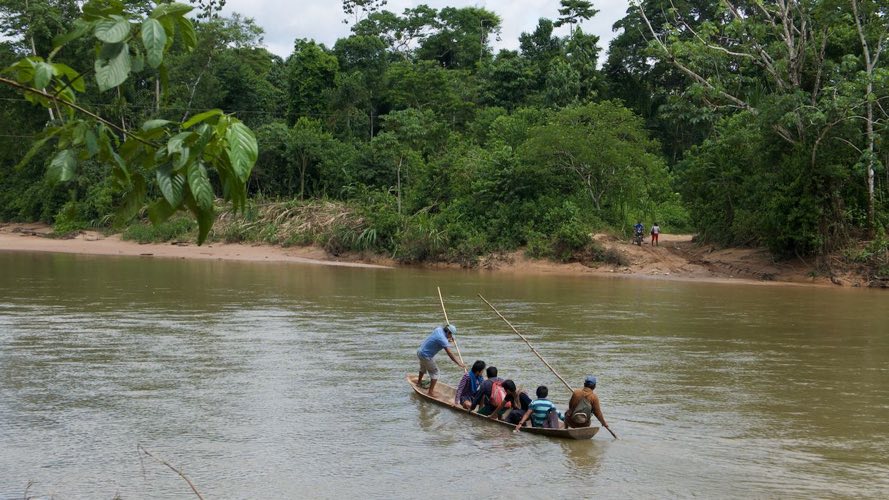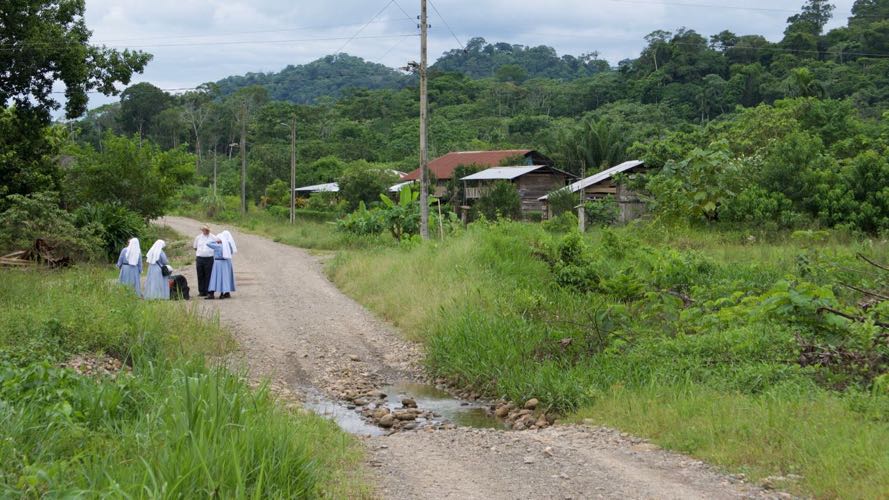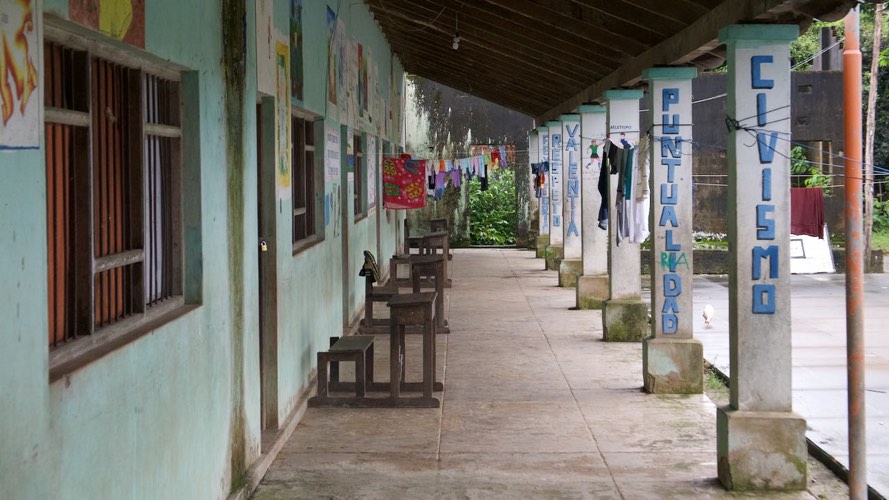Human Family in Christ
© Human Family in Christ, 2016. All rights reserved. Updated 2022 February 12
Canadian Registered Charity, Canadian Revenue Agency Nº 89333 7568 RR0001.
TIPNIS
TIPNIS is a 1 million hectare tropical nature reserve in the Amazon basin with 64 small indigenous communities.
In the southern part the forest has been cleared into 1/4 hectare size parcels where the locals and immigrant Quechua from the Altiplano, grow coca, supposedly for local consumption. Much of it is bought by coca barons who process it into cocaine for export to the USA. The Tipnis coca is ill suited for chewing, unlike the coca that is grown north of La Paz in the tropical Yungas.
Route to Tipnis
From Cochabamba across the Cordillera Tunari, on a winding 2-lane highway to Santa Cruz de la Sierra. The highpoint is near Corani at 3,700 m. After the highpoint the environment changes abruptly, from the dry valley of Cochabamba to a moist, humid and lush tropical vegetation. Then a long descent into the town of Villa Tunari. Most trucks ascend and descend at a snail's pace. It requires fearless driving to pass without sight of oncoming traffic around the next bend. At Villa Tunari a local road leads to Isinuta where the pavement ends. This is the southerly part of TIPNIS.
Route to Santisima Trinidad
In Isinuta public transit is a well used former military 4x4 truck, with wooden benches behind the cabin. The truck follows a dirt road and drives through 3 wide but shallow rivers: Isiboro, Ilibulo and Sasasama, before it gets to Santisima Trinidad.
Santisima Trinidad
This is a small village with a population of not more than 200 Trinitarios. They are very welcoming. The children are delighted to encounter strangers, particularly if you are a tall gringo. Most are Roman Catholic and maintain religious customs that go back to Spanish times. Surprisingly the Trinitarian language is disappearing, replaced by Castellano. The children are not taught by the older generation, a mystery this loss of culture.
Macheteros
The Macheteros, indigenous men who carry a machete, continue a very rich culture of music with a high pitched flute and drums and dance with head dresses made from the tail feathers of the Macaw. It is a magical and mesmarizing experience to see this dance performed in the darkness of the night.
TERRITORIO INDIGENA Y PARQUE NACIONAL ISIBORO SÉCURE, TIPNIS































